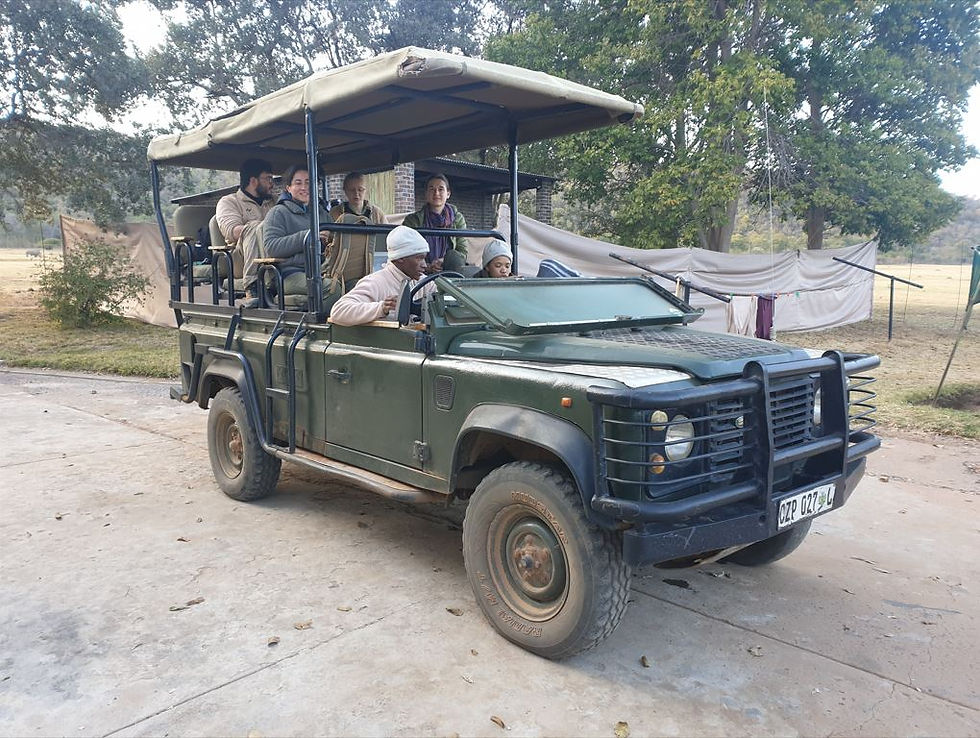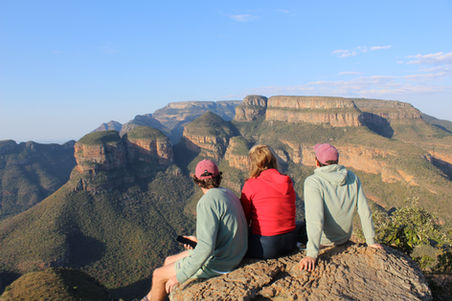Working on conservation volunteer projects in South Africa | Camera trap surveys | How to guide
- Hamba Africa
- Nov 8, 2022
- 5 min read
Updated: Nov 11, 2022
Volunteering with Hamba Africa wildlife research projects
Maybe you're a university student looking for a study abroad program or internship in South Africa, on a gap year looking for a travel experience that has a positive and sustainable impact, or maybe you're a wildlife fanatic wanting to live with animals like elephants and lions as you volunteer with projects designed to protect them for future generations.
Whatever your reason for joining us, we're grateful to have you and for your hard work and commitment to the conservation projects and wildlife research work included in your Long Term Wildlife volunteer placement.
Using camera traps to survey or monitor wildlife
Camera traps are an invaluable tool for conservation work, they allow scientists to capture images and data of elusive or nocturnal animals. You'll be using them extensively so let's discuss how to use them as effectively as possible.
Preparing the cameras
Camera traps are built to operate automatically and in remote areas for extended periods. To do this, they need to be prepared and readied for their weeks or months in the field.
They'll need to be loaded with batteries and empty micro SD cards. Settings will also need to be configured for the appropriate goals of the conservation project and the camera case inspected to look for signs of damage.
You'll assist with this typically the day before the camera traps are scheduled to be deployed out into the environment to help make the most of your time in the field.
In the morning you'll pack the vehicle up with camera traps as well as all the tools you'll need to help deploy them into the bush. Elephant-proof steel wire, elastic bands, rebar poles, hammers, pliers and all the rest to ensure you can successfully set up the camera.

Site selection with camera trap surveying
Site selection is one, if not the most important step when placing camera traps.
Like any tool, the camera itself is only as good as the individual operating it. When selecting a site to deploy a camera trap, there are a few key considerations to keep to maximise success and the probability that the camera will gather valuable data.
Use your knowledge and expertise in animal behaviour, ecology and tracking. Understanding your target species and thinking like the wildlife you're researching will give you the best chance to capture it on photo or video.
Example: Let's say you're deploying camera traps as part of the long-term monitoring of the endangered and rarely-seen black rhino.
What do they eat? Are the local plants appropriate for their diet? How do they eat? Is there evidence of browsing in the area? Is there evidence of tracks or dung piles? How old is the dung? Older or fresher than another dung pile sighted?
Answer these questions and you will dramatically increase your ability to infer whether there are or are not black rhino in the area, and is it worth selecting this site for a camera trap.

These practical skills and experience give any ecologist or naturalist their edge and confidence when living and working in the outdoors. You'll gain these and other skills during the projects in your placement. A valuable career boost for students and perfect as a university practical placement abroad or in South Africa.
For those really wanting to master the outdoors, try our 2-month become a professional field guide course.
Safety as a volunteer on a wildlife reserve in South Africa
Before you get out of the vehicle to deploy the camera please, please and please again LOOK AROUND.
Fun fact: There are lions, elephants, rhinos, hyenas, leopards, buffalos, hippos, and even dangerous snakes on the reserve you'll be living and working on.
Additional fun fact: In a fight, our money is on them every day of the week.
Jokes aside, we know that once you've deployed camera trap number 13 of the day and you've gotten a lot faster, more confident, and are in a rhythm you might overlook checking the bush.
Here's a cautionary tale: After deploying one of the camera traps with a group in August of 2022, getting back in the vehicle and driving around the next bend in the road, our volunteers found two female lions sleeping. Obviously, the guides and biomonitoring officers are trained to work in the bush and would never let you do anything dangerous but please take personal responsibility to keep yourself safe as well.

This safety should also be applied for working in any outdoor environment, not just in South Africa, is the ground safe to walk on? Have I gone out as a group or have I let someone know where I'm working if working alone? Are there hazards like roads or rivers?
Deploying your camera trap
The cameras are prepared, you know how to select a site relevant to your target species and you've checked the area and know you're safe. Fantastic. Let's set up the camera traps!
Selecting an anchor - The best and most obvious place to attach a camera trap is a tree. Make sure the tree is an appropriate thickness to host the camera while preventing overly curious animals from ripping the tree down to get at the camera. If trees aren't present, a steel rebar pole and a lot of hammering are a good option.
Positioning and elevation - Depending on your target species will determine the height of the camera. Larger animals like rhinos can have a camera placed higher up than if you are taking images of leopards or smaller animals.
Clearing the field of view - Camera traps are motion activated. Clear the field of view of all grasses, branches, and leaves to ensure they don't trigger a capture as they blow in the wind.
Test capture - Set the camera up and trigger it to ensure it's working well. You might choose to view the image to double check you're happy with the positioning.
Record the location and data - Make sure to record exactly where you've placed the camera either on a map or with a GPS marker. You'll also want to record the time and date as well as other information relevant to the survey and research such as site number or key site information.

Camera trap usage
Camera traps have come a long way since 1890 and George Shira first hooked up a camera to a trip wire and flash. Now, these autonomous little eyes in the field typically use infrared sensors to detect changes in temperature or movement and take an image or video.
From researching black rhino in South Africa, to monitoring pine martin in the Forest of Dean here in the UK these incredible tools are invaluable to conservation work globally.
In addition, camera traps using newer, higher-quality lenses provide a fantastic contribution to wildlife photography.
If you've not used camera traps already and are studying or working towards a career in ecology and conservation, why not purchase one yourself and have an experiment in your nearest and dearest wildlife haven?
Start gaining familiarity and confidence with camera trapping... you never know what you'll find!

For anyone planning to join us to protect endangered wildlife with our Long Term Wildlife volunteer placement, Hamba Africa looks forward to helping you gain skills and become a master of this conservation methodology.




































































Comments